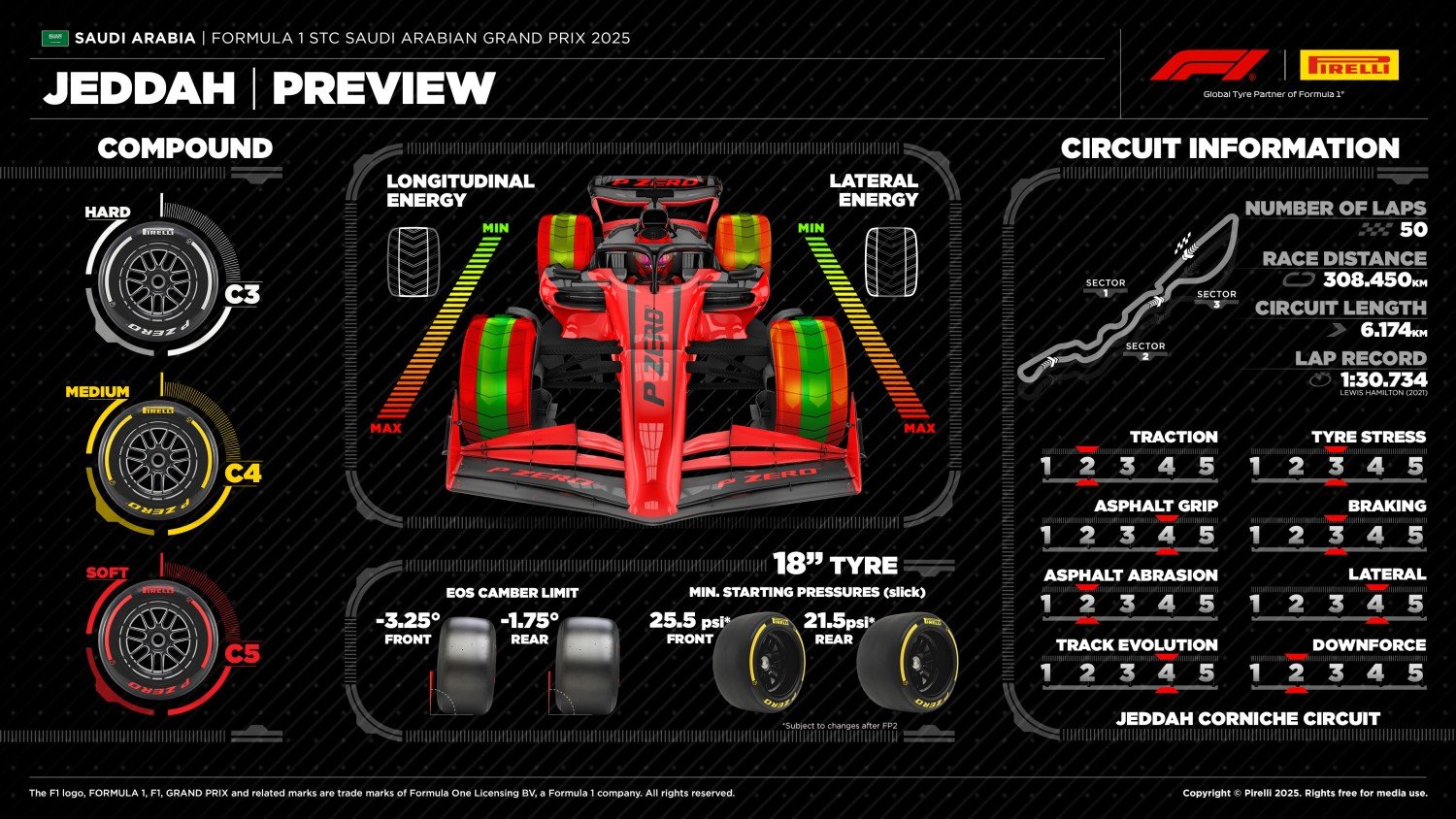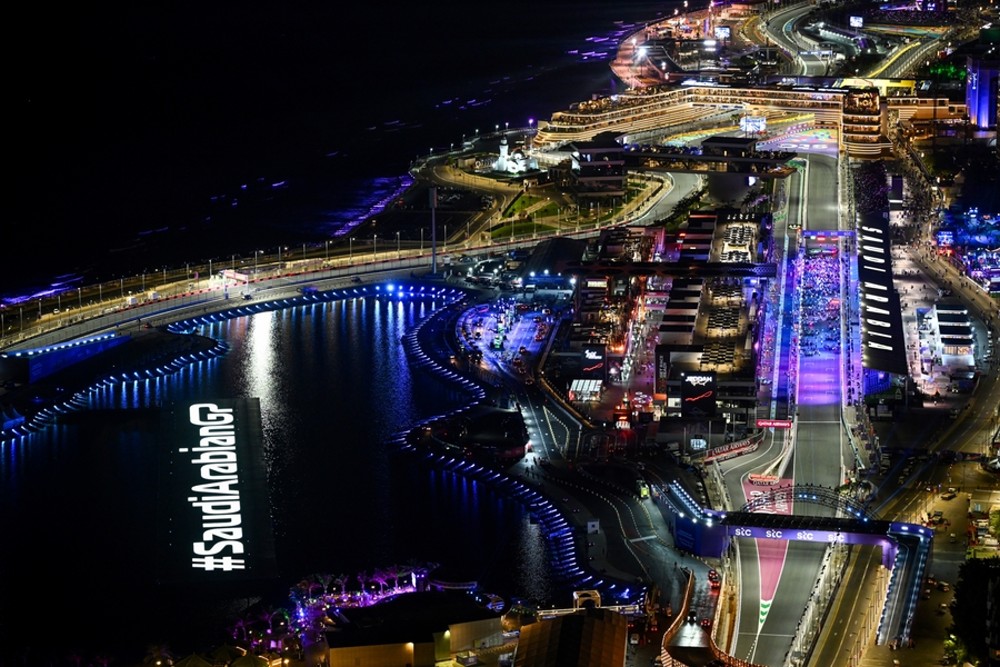Formula 1 News: 2025 Saudi Arabian GP Preview
Round 5 of the 2025 FIA Formula 1 World Championship season takes the teams to the Jeddah Corniche Circuit for the Saudi Arabian Grand Prix.
After events in Japan and Bahrain, Saudi Arabia completes the opening triple-header of the 2025 campaign, with the street-style Jeddah Corniche Circuit welcoming Formula 1 for a fifth time.
The 6.1km (3.6-miles) circuit stretches out along the Red Sea shoreline of Saudi Arabia’s second city, and with 27 turns Jeddah has more corners than any other circuit on the current calendar. The majority of those are taken at high speed, in sixth gear or higher, making Jeddah the fastest street track on the schedule.
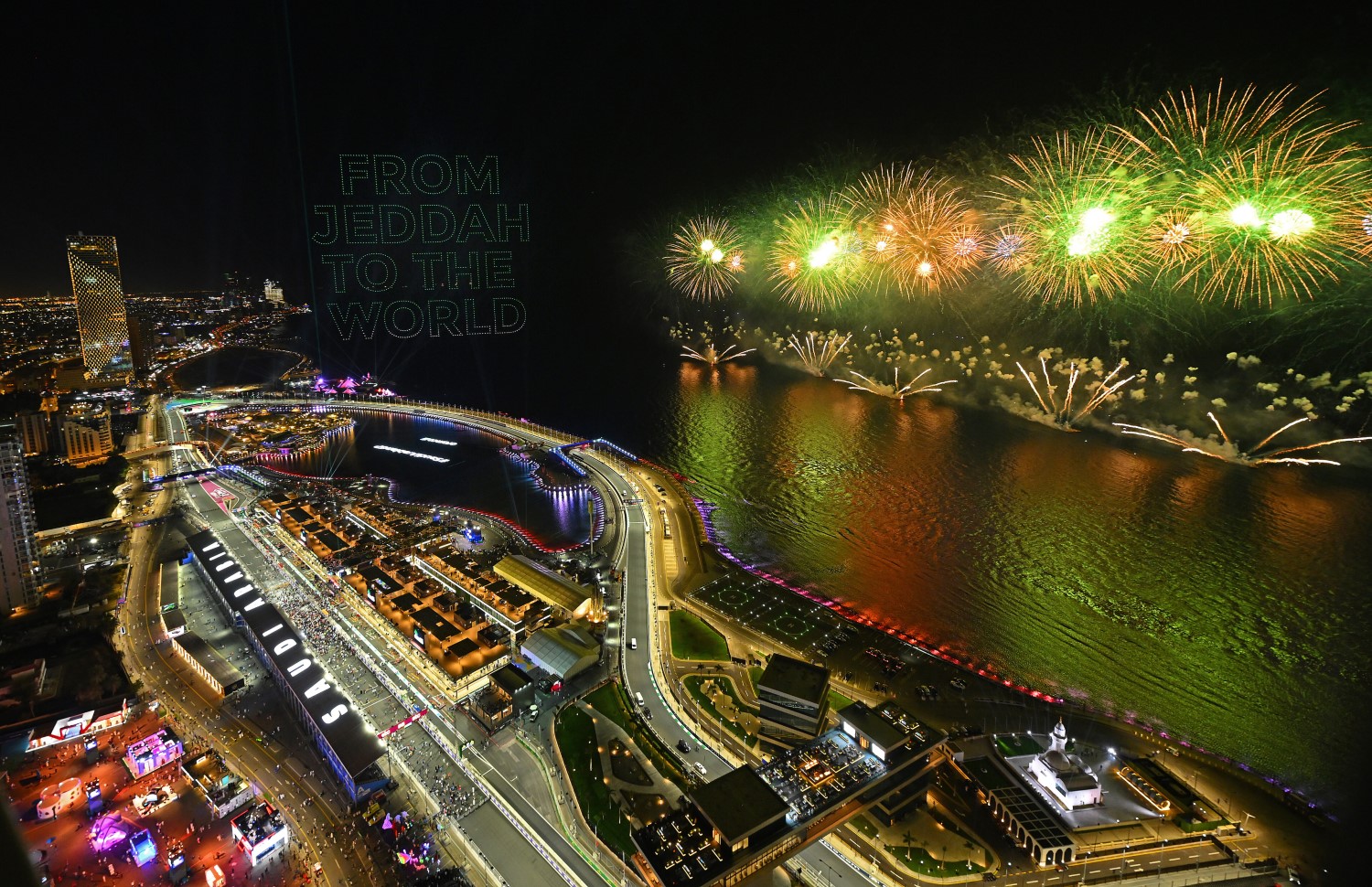
The blind nature of many of those corners – some of those mere kinks – adds to the challenge for drivers. Jeddah usually has high track evolution through the course of the weekend, with qualifying and the race taking place at night, in cooler ambient conditions than the daytime. Interruptions and delays are also likely, with all four Formula 1 races held so far at Jeddah having featured the deployment of the Safety Car due to incidents and accidents.
Teams now face the challenge of quickly adapting the car to the Jeddah Corniche Circuit, which is much more sensitive to drag than Bahrain. There are a couple of tricky corners on the circuit, which seriously test the car and drivers. With each lap being in excess of 3.6 miles, there are few opportunities to practice these corners before the Qualifying session.
The key sessions take place in the evening, and teams will need to be mindful of the changes to wind and temperature following the sunset. The track surface is much smoother than in Bahrain, and Pirelli have provided softer tire compounds for this event.
There are a lot of consequences for going over the limit, and getting close to the limit is harder than going to other tracks with run-off.”
The infrequent use of the Jeddah Corniche Circuit means track evolution through the grand prix weekend is likely to be high, while teams and drivers must also be mindful of the changing track temperature in qualifying and the race, which both begin beneath the lights at 20:00 local time.
The track features a mix of long wide corners taken at very high speeds and narrow, twisty sections, meaning the drivers are kept very busy. The track surface provides a decent level of grip, but without being too abrasive. One can rely on the track conditions evolving considerably over the weekend, with a one-stop tire strategy being the most likely.
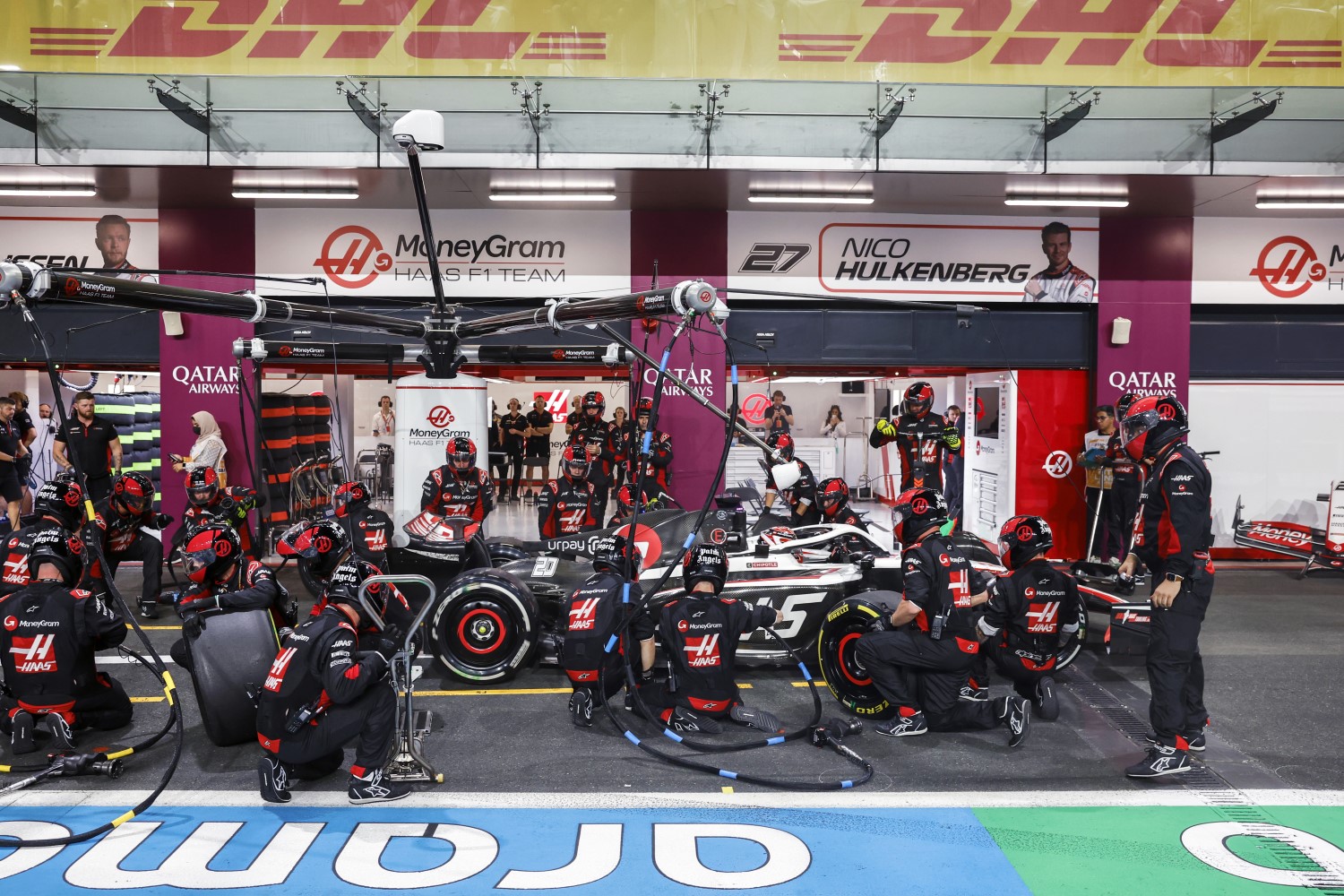
Fact File: Saudi Arabian Grand Prix
- The Saudi Arabian Grand Prix is held on the Jeddah Corniche Circuit, located in a waterfront area next to the Red Sea.
- The location presents similar challenges to Abu Dhabi with sand blowing onto the track and changes in wind direction from day to night.
- The Jeddah Corniche Circuit has the most corners of any track on the F1 calendar with 27: 16 left and 11 right.
- It is also the second-longest track we visit at 6.174km. Energy management across the lap is therefore tricky and puts more focus on the MGU-H and hybrid system performance.
- With numerous long straights, drivers spend over 80% of the lap at full throttle and the circuit is ranked third in terms of time spent, and distance covered, using this metric.
- There are six braking events across the lap with two of those designated as ‘heavy’.
- Turn 13 has a 12% gradient, with banked corners opening up more lines and helping to build momentum onto the next sweeping, high-speed section.
- Turn 2 is the slowest corner on the circuit, taken around 80 km/h, whilst the quickest are Turns 20, 21, and 26 which are taken at close to or over 300 km/h.
- Sensitivity, which describes where you find lap time, is biased very strongly towards high-speed corner performance.
- Owing to its nature as a street circuit, Jeddah has a high risk of incidents leading to Safety Cars. Across the three previous races in Saudi Arabia, there have been four full Safety Car periods, and two red flags.
- Three drivers have shared the wins in the four editions of this Grand Prix held to date. Max Verstappen won twice in 2022 and 2024, Lewis Hamilton claimed victory in the inaugural event in 2021 and Sergio Perez came out on top in 2023. The same three drivers are also responsible for all four pole positions, although in this case it’s Sergio Perez who has two to his name, in 2022 and 2023, with the Englishman claiming the top grid slot in 2021 and the Dutchman doing so one year later.
- The four-time world champion has always finished on the podium here, with Charles Leclerc setting the most fastest race laps with two to his name, as well as finishing in the top three twice. Naturally, Verstappen leads the way for points scored on 87 followed by his former team-mate Perez on 55, with the Ferrari driver third on 49.
- 35 countries have hosted at least one race in motorsport’s blue riband category. The one with the most Grands Prix to its name is Italy on 107, followed by Germany, Great Britain and the United States all on 79. Saudi Arabia is the latest and fourth Middle Eastern country to host a race, while the region as a whole has, to date, hosted 44 Grands Prix: 21 in Bahrain, 16 in Abu Dhabi, 4 in Saudi Arabia and 3 in Qatar.
-
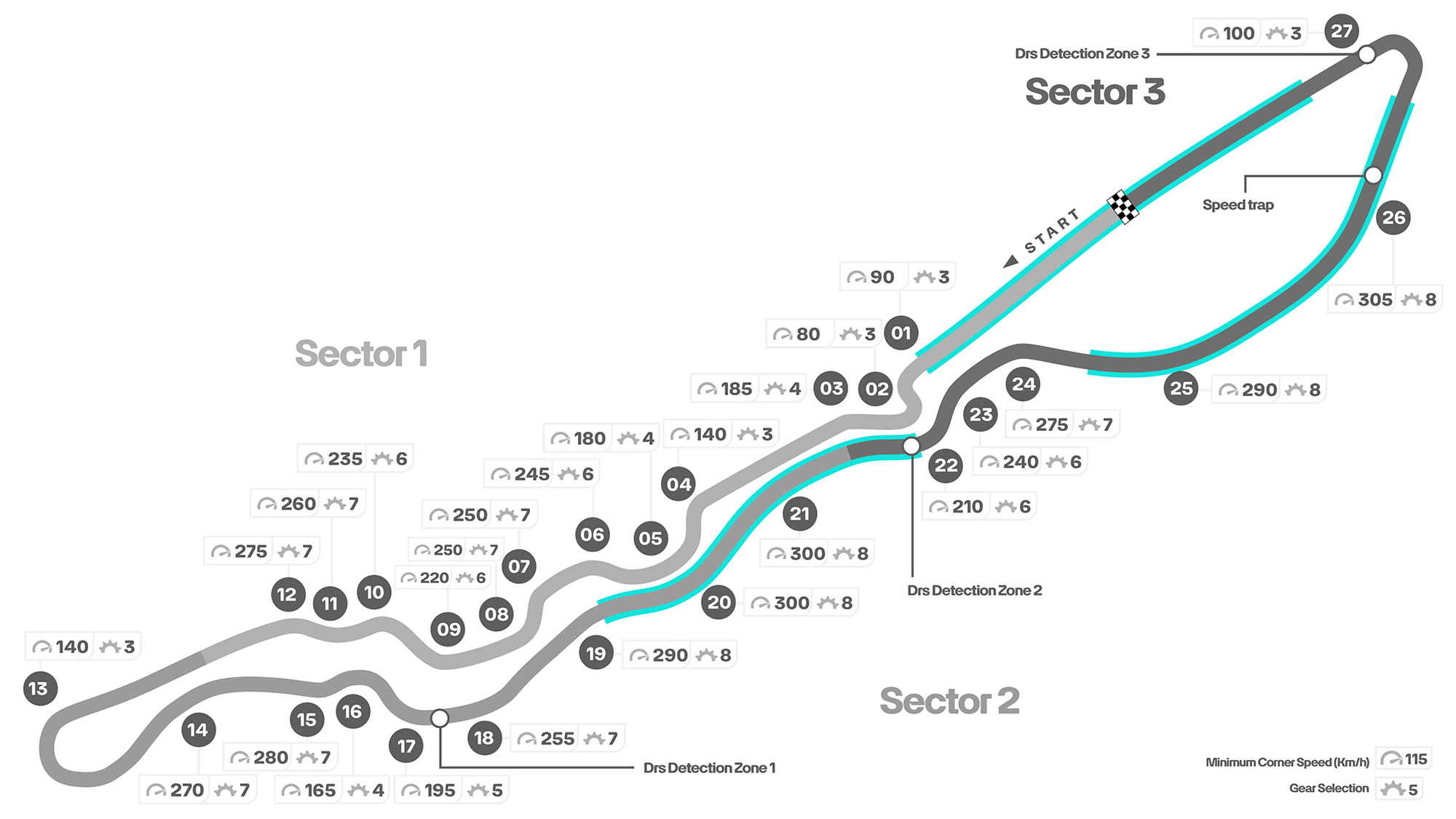
DRS zones. There are three DRS zones: between turns 20 and 22; between 24 and 27 and on the start-finish straight, which means there are plenty of overtaking opportunities, unusual for a street circuit.
Race Insight
Race interruptions: With its fast nature and walls in close proximity, there has unsurprisingly been no shortage of interruptions in the Saudi Arabian Grand Prix’s short history. The inaugural race featured two red flags and four Virtual Safety Cars. 2022’s event had just one Safety Car and two VSCs. 2023 featured one Virtual Safety Car and one Full Safety Car deployment.
Strategy: The C2, C3 and C4 compounds, which were used last year, in 2025 are a step softer than last year. Strategy is often dictated by incidents in the race, meaning teams need to be prepared for late calls into the pits for a change of tires.
Overtaking: While Jeddah Corniche Circuit features 27 corners, more than any other circuit on the calendar, there are just two significant overtaking opportunities. Turns One and 27 account for 89 percent of all passes to date. A short run to T1 at the start limits opening lap overtaking.
Defending Race Winner: Max Verstappen converted pole position into victory at the Saudi Arabian Grand Prix as teammate Sergio Perez made it a Red Bull 1-2. Verstappen grabbed the lead from pole on the fast Jeddah street circuit, lost it for two laps to Lando Norris during pit stops and motored to his 56th career F1 win by over 13-seconds. It will be very different this year, with the Red Bull RB21 the 4th or 5th fastest car on the grid.
Unlocking the Lap
In a very short period, The Jeddah Corniche Circuit has established an identity for itself quite apart from the mainstream. It’s a street circuit lacking the usual street-circuit tropes. It has ultra high-speeds; it has banking; it doesn’t have a preponderance of second-gear, 90° corners. It does have the ever-present drama of barriers to be brushed by cars on a flying lap – but it isn’t a circuit where Qualifying position dominates.
This is a track layout for racing: multiple overtaking opportunities on every lap – but also a heavy price to pay for the overly ambitious. It makes the Saudi Arabian Grand Prix a mesmerizing race to watch, and one where fortunes can be transformed in an instant.
The track is a long, narrow ribbon, reminiscent of a longer, faster Circuit Gilles Villeneuve in Montréal, with the city to the east, the Red Sea to the west, and a lagoon separating the start-finish straight from the back-straight.
Following the Turns 1-2 Chicane, the anti-clockwise lap features a high-speed, rapid-change of direction sequence of linked corners on the run up to 12° banked, parabolic T13, where the track turns back on itself, heading back down the coast along an ultra-high speed pair of full-throttle sections separated by a chicane. While not ‘straight’ in the geometric sense, the curvature on this section of track is sufficiently shallow for both to be DRS zones.
Turn 27, the final corner, is also slightly banked, giving onto the start-finish straight, which is the longest of the three DRS sectors and, heading towards the lowest-speed corner on the track at Turn One, is the prime overtaking spot. It’s an intriguing track layout with an unusual amount of positional chess played, with cars often unwilling to take the lead on the back-straight, preferring to get DRS onto the front-straight, so to take the lead into the chicane and have 17 corners to pull clear before reaching the next DRS detection point.
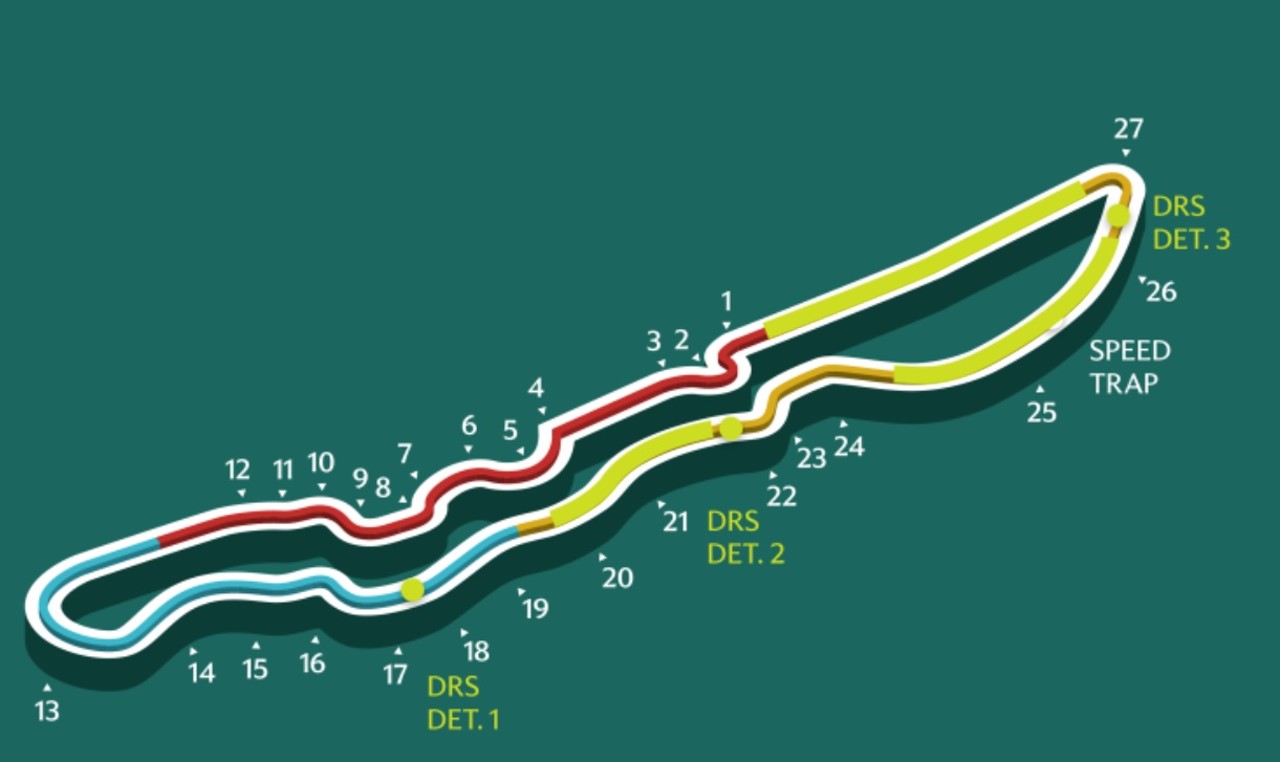
Defending Race Winner’s View – Max Verstappen
“Bahrain was quite a difficult weekend for us and didn’t really go our way at all. We had some issues that set us back and we still have a lot of work to do on the car to get us where we need to be.
“However, last year Jeddah was a good track for us, and it is a proper high-speed semi street circuit which is fun to drive. Typically, there is less tire degradation at this circuit, so it naturally should be a better race for us. We have a final push with this being the third race and final weekend of the triple header, so hopefully we can find more pace and bring out a performance similar to Japan.”
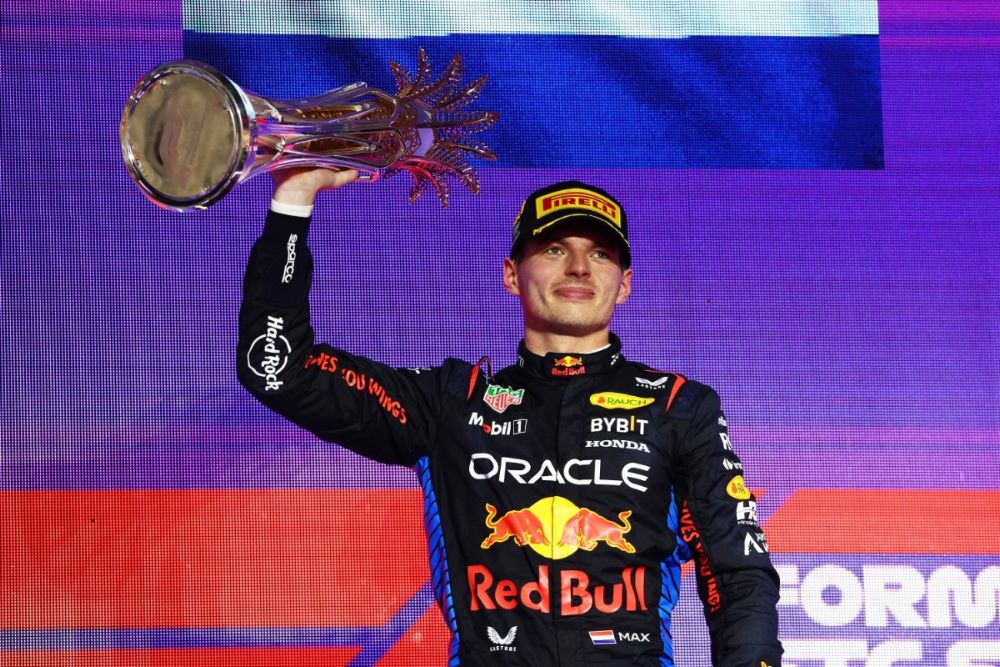
Saudi Arabian GP Weather Forecast
Friday
Friday’s practice sessions are set to be a warm and dry affair, as expected. Temperatures will likely be 31 degrees Celsius during FP1, and it will decrease by two degrees for FP2. Wind gusts can once again cause headaches for teams, with a maximum of 35 kph, but will decrease towards FP2.
Saturday
Saturday sees much of the same. However, It will be hotter than Friday, once again with northwestern winds. It will be 32 degrees celsius during FP3, and it is predicted to go down by two degrees for the second session of the day.
Sunday
The same conditions are expected as for the race in Jeddah: it will be a hot and dry session, with a northwestern breeze.
Once again, wind gusts of 35 kph are expected for the race, but that will decrease. During the 50-lap race, 30-31 degrees Celsius are expected.
Saudi Arabian GP Tires
The choice of compounds for the first four races of this season were the same as last year’s, but for round five, Pirelli has taken a softer step, with the C3 as Hard, the C4 as Medium and the C5 as Soft being the trio available in Jeddah. This is in line with the aim, shared with the FIA, F1 and the teams, to create more strategy choices for the race and therefore more exciting and unpredictable racing. In the four previous editions of this Grand Prix, the one-stop has always dominated, both in terms of its effectiveness and team preference, even when a Safety Car mixed things up a bit more.
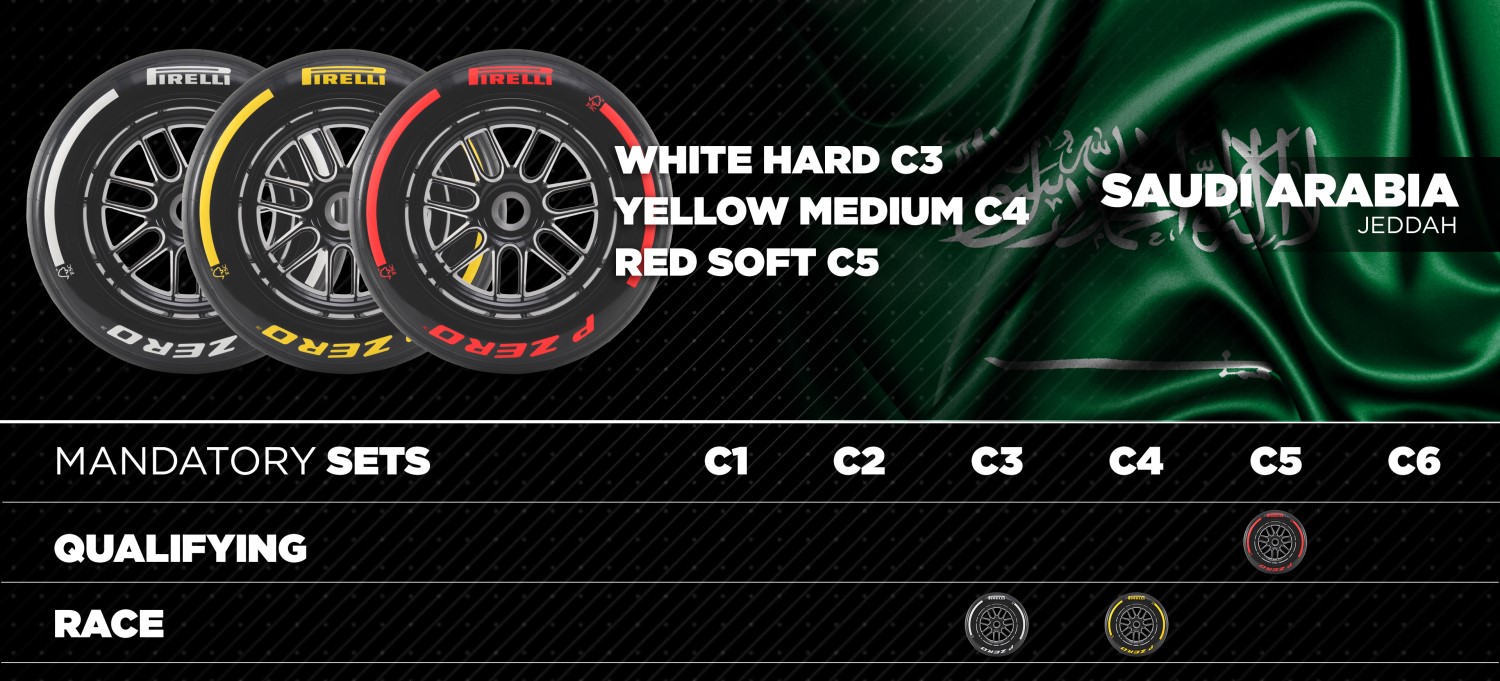
The track is 6.174 kilometers long and one of the fastest of the season with drivers spending around 80% of the lap with the accelerator buried to the floor, even though it is fairly twisty and boasts a record number of corners, 27 in fact, with 16 to the left and 11 to the right. Many of them are taken at medium or high speed. Although there are three DRS zones, overtaking is not that straightforward due to the lack of any heavy braking points.
The track surface is not very abrasive, with an average level of roughness, but the lateral forces exerted on the tires are considerable, although not at the level to be found at Suzuka or Barcelona for example. Graining can put in an appearance, especially in the first free practice sessions as the track is very dirty to start with because it is rarely used for motor racing. However, with several support categories also racing, track condition improves over the course of the weekend, so that this phenomenon diminishes. However, with a softer trio of compounds this year, it will be interesting to see what effect that has.
As is usually the case at street circuits, track evolution will be very high and in qualifying, it will be crucial to choose exactly the right moment to go out on track to set a good lap time and also important will be getting the preparation lap just right. In past events here, we have even seen drivers doing two preparation laps to get the Softs to the right temperature and that can cause traffic related problems.
Apart from the usual support race in the shape of the second round of the Formula 2 championship, the Jeddah circuit also hosts the F1 Academy for the first of its seven rounds this season, all run alongside a Grand Prix event. For the second consecutive year, Pirelli is the Official Tire Supplier for the all-female championship. The company thus strengthens its support for young drivers on their career ladders by broadening the scope of opportunities available to them so that, as has already been the case in the past, some drivers could make the way to the top of their specialist field having always and exclusively raced on Pirelli tires.
All the F1 Academy cars are shod with 13 inch Pirelli P Zero DM, the same as last season and in all Formula 4 series where Pirelli is the supplier. The P Zero DM is designed to maintain a constant performance level even over longer distances so that racing drivers can develop their skills without having to deal with variables usually found in major championships relating to tire wear. Each driver will have 14 dry tires (three and a half sets) and 8 rain tires (two sets) per race weekend.
THE TIRES ON TRACK
